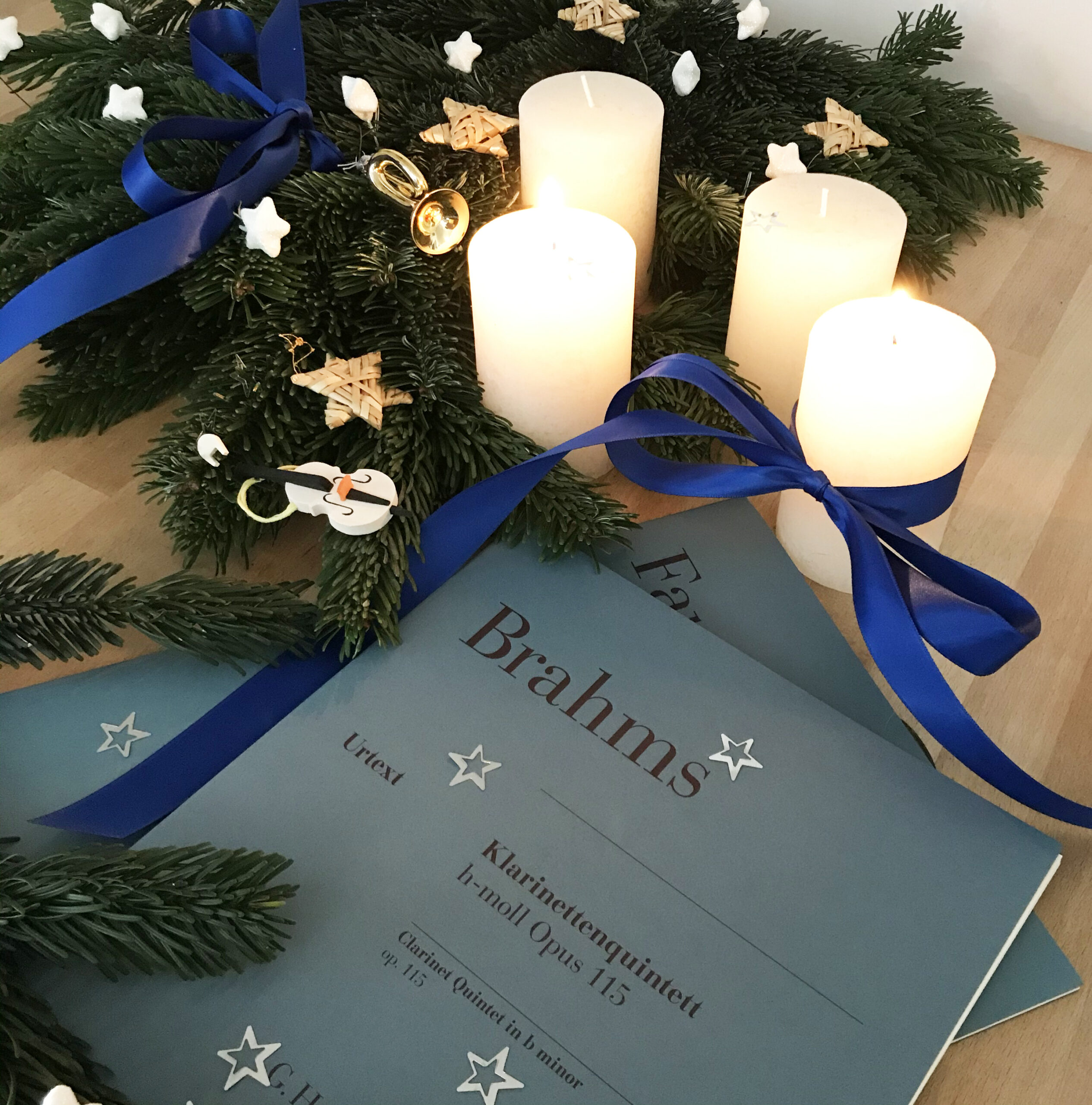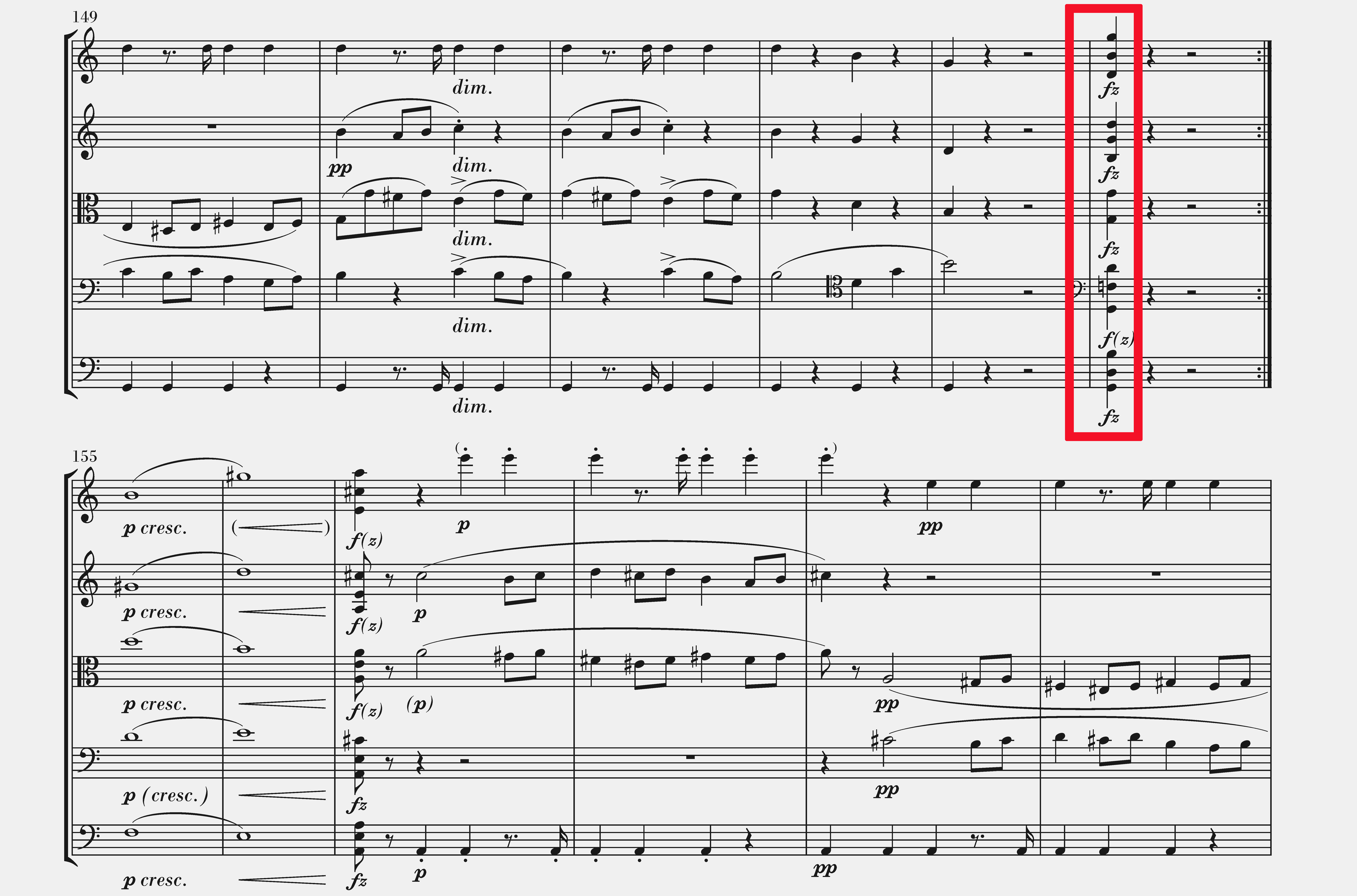 Not annually like the Christ Child, but every few years each Henle Urtext edition comes back again to the desks of the publishing-house editors: When, that is, the current issue is sold out and we have to plan a new one. We take this opportunity to check carefully through the Urtext edition, correct any typesetting errors perhaps coming to light (yes, errors can occur even at Henle – though not lasting for long!) and possibly still making one or two improvements to the layout. Above all, however, we have the chance to respond to the critical queries that our customers keep sending us, especially those repeatedly relating to repertoire classics – which I find exciting enough to report on here, using Schubert’s String Quintet D 956 (HN 9812) as an example.
Not annually like the Christ Child, but every few years each Henle Urtext edition comes back again to the desks of the publishing-house editors: When, that is, the current issue is sold out and we have to plan a new one. We take this opportunity to check carefully through the Urtext edition, correct any typesetting errors perhaps coming to light (yes, errors can occur even at Henle – though not lasting for long!) and possibly still making one or two improvements to the layout. Above all, however, we have the chance to respond to the critical queries that our customers keep sending us, especially those repeatedly relating to repertoire classics – which I find exciting enough to report on here, using Schubert’s String Quintet D 956 (HN 9812) as an example.
For after all, just because the music text corresponds to the sources and is, in our opinion, absolutely correct, does not mean that musicians are satisfied with it. Particularly with repertoire classics such as Schubert’s String Quintet, performance habits are often passed down through teacher-student relationships or recordings of the works, the music text notwithstanding. And if, then, in our edition, this is not the case, we must have an answer to their questions.
A good two years ago we got the question about Schubert’s String Quintet as to whether there was an error in the first movement’s repeat directive: the fz chord in m. 154, effectively framed by general rests, makes sense only as a dominant-seventh chord on G to the tonic C major before the repeat of the exposition, but not in the transition to the development, which modulates to A major and has in turn an fz chord in m. 157, which is then deprived of its effect after m. 154. Could it be that here for m. 154 the indication is missing, that this measure is only to be played the first time around, that thus a prima volta bracket should be added?
This idea sounds straightaway convincing – and after a little research, also turned out to be nothing new at all: For decades now, the theory of a possibly redundant bar in the repeat has been haunting the chamber music scene, with also an astonishing number of recordings (for example, a recording by the Artemis Quartet) that eliminate this bar in the exposition repeat.
In 2021 this in turn prompted David H. Miller, a musicologist at the University of California, Berkeley, to investigate the question in more detail in his highly interesting essay “Hidden Endings and Disappearing Measures in the First Movement of Schubert’s String Quintet in C Major, D. 956”. So, we obviously needed to clarify this in our quintet edition!
Initially, though, the most important question for us as Urtext publishers was: What do the sources say? Extant for this work, unfortunately, is only a single source, and a less reliable one at that: the first parts edition that was not published until 1853, a quarter of a century after Schubert’s death. None of the five individual parts has such a prima volta bracket.
But couldn’t this have been an oversight? Either in the engraver’s copy of the first edition or in the printed parts (in which case five times over!)? Since neither Schubert’s autograph nor any other contemporary, authorised source has survived, we must rely solely on musical arguments to clarify this question – and so in December 2021 I first turned to the editor of the edition, Egon Voss.
He kindly thanked me for the ‘Christmas enigma’ in his edition and promptly explained his interpretation of the passage: Although m. 154 initially conveys the G-major seventh chord as the dominant to the exposition’s C-major tonic, it also leads through the four-note g/b/d/f to the g sharp/b/d/f in m. 155. In his opinion, this is precisely where a special surprise effect lies: that the same emphasised fz chord is once followed, ‘decorously’, by the tonic, and once by a diminished-seventh chord. Furthermore, the two fz chords are only to a limited extent comparable, as they have different functions in the harmonic structure of the movement: m. 154 is dominant, whereas m. 157 brings the (new) A-major tonic. And finally, from a formal point of view, m. 154 can also be interpreted as an essential component of an interesting motif sequence in the transition to the development section, which is mirrored around the two transition measures 155–156: coda motif 1 (mm. 138–146) – coda motif 2 (mm. 146–153) – fz chord (m. 154) – transition bars (mm. 155–156) – fz chord (m. 157) – coda motif 2 (mm. 157–161) – coda motif 1 (mm. 161–167).
Consequently, our editor concludes that a different interpretation of m. 154 is possible, but by no means imperative – which is, incidentally, in line with David H. Miller’s thinking. And what does this mean for our edition? If the measure can be interpreted logically from a musical point of view, there is no need to refer to a possible omission in the repeat – that much Urtext is necessary. But what can we do to ensure that no mistake is suspected here? Fortunately, our editions contain not only notes but also text!
And so we decided to include a reference to the comments at the relevant spot in the new issue that was due last fall, presenting the situation in the most concise form possible:
Dispelled in this way is the ‘suspicion of error’, and musicians can decide for themselves how to deal with m. 154 – which is also entirely in the spirit of our editor, who had at the time introduced his correspondence on the passage in question with the words: ‘As far as our Schubert Quintet is concerned, I would like to say in advance that it is of course up to the musicians how they interpret the works and how they play them.’ On this note, I would like to leave you with the following listening tip for the Advent season: why not listen again to your recording of the Quintet, how often do you encounter m. 154?






And then there is the voice leading. Where would the B-G# in violin 1 in ms. 155-156 come from if not from the B-G natural on top of the chord in m. 154? And the lower voices in ms. 155-56 all move logically from the chord in m. 154.
The harmony in ms. 155-156 is passing. Passing harmonies connect, they don’t just appear out of nowhere.